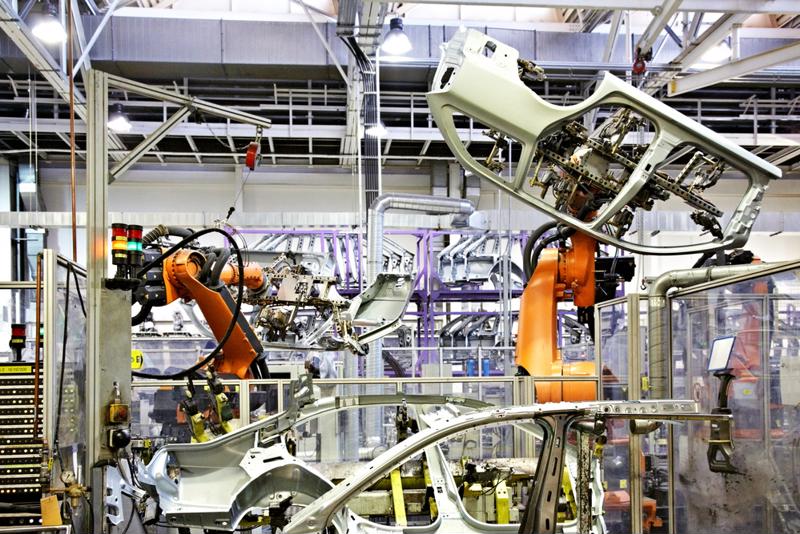
Diverse protocols gaining momentum as industrial Ethernet rises
By Donna DonnowitzAugust 1, 2016
Industrial Ethernet technologies have been gaining steam in recent years as they offer easier integration between disparate network components in settings where demanding network requirements mix with harsh environments. This can range from manufacturing and mining to stadiums and other outdoor entertainment venues. While operational settings vary substantially, the overarching benefit of industrial Ethernet remains constant - offering high-performance data distribution while simplifying integration between various parts of the network.
Historically, organizations in these sectors have been forced to maintain prototypical office networks, often with Ethernet, alongside specialized systems to support specific areas of operations. The ability to interconnect the network under a single broad framework - even with different protocols in place - is one of the major advantages of an industrial Ethernet setup. The flexibility offered by the technology is invaluable, and a recent Technavio study anticipated that revenues in the industrial Ethernet sector will rise at a compound annual growth rate of approximately 15 percent for the period of 2016 through 2020.
"Industrial Ethernet revenues will rise at a CAGR of 15% from 2016 through 2020."
Common Ethernet protocols and their market implications
The study found that EtherCAT technologies are gaining momentum within the industrial Ethernet sector because the protocol is able to provide a layer of determinism that is incredibly important for industrial control and automation systems. Furthermore, EtherCAT functions with a reduced CPU load, and can work within almost any network topology, allowing for cabling flexibility.
According to Technavio, Ethernet/IP protocols are rising in large part because they provide the comprehensive set of standards and certifications needed to lay the groundwork for a complex network. An Electronic Design report highlighting the various industrial Ethernet protocol options on the market echoed this sentiment and pointed out that Ethernet/IP solutions have a timing resolution of 1 ms, making them adequate for demanding automation and control systems while still using standard Ethernet interface cards.
Technavio estimates that approximately three million devices using PROFINET were purchased during 2015. The protocol is emerging as a popular option, to a great extent, because of its ability to replace legacy fieldbus systems.
The Electronic Design article also put a spotlight on PROFINET as a top industrial Ethernet protocol, pointing out that the solution operates on the same topology as typical Ethernet solutions and even the same hardware configurations as a TCP/IP setup. These factors make PROFINET incredibly accessible for industrial organizations, and an ability to function within a master/slave network environment adds another layer of simplicity.
This ease of use is balanced out by different classes of PROFINET systems, the news source said, allowing industrial operators to add determinism, near real-time response capabilities and similar functions depending on the specific needs of their operational environment.

Industrial Ethernet technologies are transforming networks in sectors like manufacturing.
Moving forward on an industrial Ethernet plan
The varied protocols and accessible technology included within industrial Ethernet is making the technology a prime option in many operational settings. However, industrial Ethernet isn't completely free of challenges. Three difficulties that industrial organizations must prepare for when choosing hardware and network configurations include:
1. Understanding environmental risks
Ethernet components designed and built for industrial use should be able to withstand harsh environmental conditions. Typically, industrial Ethernet switches can handle exposure to:
- Extreme heat and cold.
- Industrial-scale dust (think sawdust, metal shavings, etc.).
- Vibrations.
- Consistent humidity and similar air quality issues.
The ability to handle these conditions makes industrial Ethernet solutions particularly valuable, but every switch isn't created equal. It is vital to ascertain the specific conditions of the environment where you plan to deploy network systems and ensure the switches and cables you invest in can handle the environment. In particular, you should measure extreme conditions in your facility, not just everyday activities, to ensure that the equipment you are purchasing is capable of withstanding those situations.
Extreme environmental conditions can cause network performance disruption, and preparing for the worst-case scenario can ensure your industrial Ethernet setup will run like clockwork day in and day out.
"Extreme environmental conditions can cause network performance disruption."
2. Assessing compatibility issues
Many of the protocols in industrial Ethernet systems are easy to interconnect with other Ethernet technologies. The problem comes when you either need to maintain a legacy serial setup for a specific process or group of equipment. You can also run into compatibility issues when you want to roll out fiber-optic cabling links to cover long distances within a factory. Serial-to-Ethernet terminal servers and fiber-to-Ethernet media converters can be invaluable here. These tools allow you to interconnect hardware running on various protocols with ease, allowing you to mix-and-match network setups based on what makes the most sense for your business.
3. Device integration
The Internet of Things is taking hold in industrial settings, and organizations making network upgrades must consider how they will provide bandwidth to support sensors and other monitoring devices, as well as a variety of robotics solutions, spread throughout the factory. Wireless connectivity can be an option, but wireless networks depend on wired backhaul. Whether you go wireless or extend cabling to IoT devices, incorporating IoT strategies in initial network deployment can pay dividends down the line.
The diverse protocols available in industrial Ethernet systems create valuable flexibility, and overcoming challenges that come with the technology can ensure organizations are ready to maximize the benefits of Ethernet.
Perle has over 516 models of Managed Industrial Ethernet Switches with the vast array of options including 10/100/1000 Ethernet, PoE, fiber and combo ports. Perle IDS Industrial-grade Ethernet Switches are ideal for the harsh environments found in industrial factory systems and outdoor applications.



